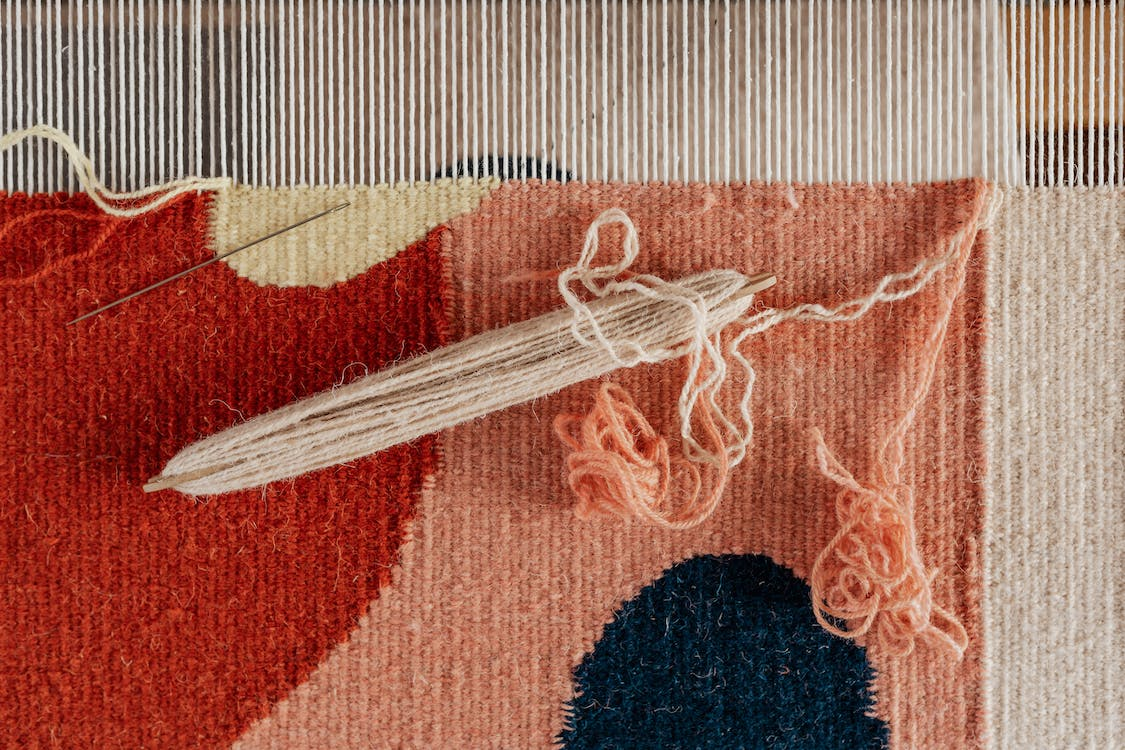In our daily lives, carpets are essential items for home living and decorating your house. With a wide array of carpets available on the market, how can we choose the one that suits you best?
These are the doubts that consumers have about carpets, So today, we’ll cover:
■ Difference between rugs and carpeting
■ Considerations for Ordering a rug
■ Considerations for Ordering carpet
■ How to decide which is right
If you still have any confusion, feel free to send your questions to this email address: chuntao@cap-empire.com.
What is the difference between a rug and a carpet?
A rug is considered a portable or movable floor covering, processed in standard sizes, not meant to cover every inch of space. Rugs are mass-produced floor coverings, sold in rolls, and fixed in place, extending from the edges of a space to the other.
Further definitions will be interspersed and connected in the following article. Here are simplified explanations of carpets and rugs from within the industry:
1. A rug is commonly considered to be smaller than a certain size, or relatively smaller in dimensions compared to a carpet.
2. Carpets are usually produced in large quantities. As broadloom carpets, they are sold in rolls and cut to the desired size.
3. Handcrafted floor coverings typically fall into the rug category.
4. Rugs are free-floating and generally do not cover the entire floor area.
5. Carpets typically span from wall to wall, often with padding underneath and possibly adhesive to help secure them.
6. Carpets can also be used to create rugs.
7.Rugs are often used for retail and personalized custom designs, while carpets are typically used for commercial purposes and bulk procurement.
Considerations When Ordering a Rug
In this section, we will discuss rugs made not from carpet, also known as handmade rugs.
These kinds of rugs are typically individually crafted by skilled artisans in workshops from Asia or the Middle East. Many rugs are made entirely or predominantly from natural fibers such as cotton, wool, jute, hemp, or silk.
It is certain that these rugs are unique works of art. However, it is essential to understand their qualities before making a selection.
Here are some advantages and disadvantages.
Advantages of Rugs
Handcrafted: They are made by hand-tying, stitching, and/or weaving.
Durable: Rugs often outlast carpets in terms of durability.
Unique: Being handmade means no two pieces are the same.
Limitless Design Potential: Customizable due to their handmade nature, you can find or customize rugs in any color, pattern, or style.
Easier Maintenance: Rugs can be cleaned with ease.
Longer Lifespan: Repairable and restorable, rugs can last for years, becoming heirlooms.
Portability: You can adjust the placement of rugs, move them to other rooms, or take them when relocating.
Environmentally Friendly: Natural materials and earth-friendlier production reduce ecological footprint.
Resale Value: Handmade rugs, especially antiques, often hold value in the secondary market.
Disadvantages of Rugs
High Cost: High-quality handmade rugs can be expensive, often pricier than carpets.
Long Delivery Time: If you require a custom-made rug, it might take several months to receive the finished product.
High Entry Barrier: Due to the substantial investment in rugs, they are not accessible to everyone.
Further Reading: How to Customize and Design Personalized Rugs?
Considerations When Ordering Carpets
This section applies to industrially produced carpets, the kind that comes on large rolls (or carpet tiles), which might require professional installation in homes or workplaces.
Carpets are typically made from synthetic materials, although natural fibers like wool can also be used. Carpets are usually machine-made and can be produced in bulk. The colors and patterns of carpets often align with modern design trends.
While carpets lack the uniqueness of rugs, they have their own merits. Let’s take a look at some advantages and disadvantages of carpets.
Advantages of Carpets
Diverse Selection: Showrooms from reputable carpet suppliers offer a wide range of choices in terms of style, material, color, texture, and design.
Cost-Effective: Carpets are considerably more budget-friendly than rugs.
Replaceable: If you get tired of your old carpet, you can easily replace it with a new one.
Versatile Use: Carpets serve multiple purposes – they can be laid on stairs, affixed to walls, or even customized as area rugs (for example, around a fireplace or window ledge).
Customizable: Many carpets can be cut into various sizes and shapes, then finished with binding (binding or sewing) for a tailored floor covering.
Disadvantages of Carpets
Lack of Durability: Carpets aren’t as resilient and can’t withstand heavy cleaning as well as handmade rugs (such as beating, shaking, or soaking in a bathtub).
Limited Repair Options: While you might be able to mend a carpet, repairs are often conspicuous, and the area’s structure might become more fragile.
Shorter Lifespan: Carpets typically have an estimated lifespan of five to seven years. As they’re often unrepairable, you’ll need to replace them periodically.
No Resale Value: Even if you salvage and sell used carpets, you won’t make much profit.
Professional Cleaning Required: Because carpets are affixed to the floor and often use adhesive, deep cleaning often requires commercial services.
Less Environmentally Friendly: Synthetic materials and mechanical manufacturing processes are less environmentally friendly.
Should You Choose a Rug or a Carpet? Finadpgifts is Here to Help!
Different choices bring about different experiences, and this is a highly personalized decision. Whichever you choose, as long as it fits within your current economic and needs range, it’s the right decision.
We are more than willing to offer you suitable and helpful advice for choosing a rug or carpet, such as customized rugs, design rug patterns, personalized handmade rugs, and more. Rugs or carpets can elevate your happiness quotient~
Post time: Aug-21-2023




